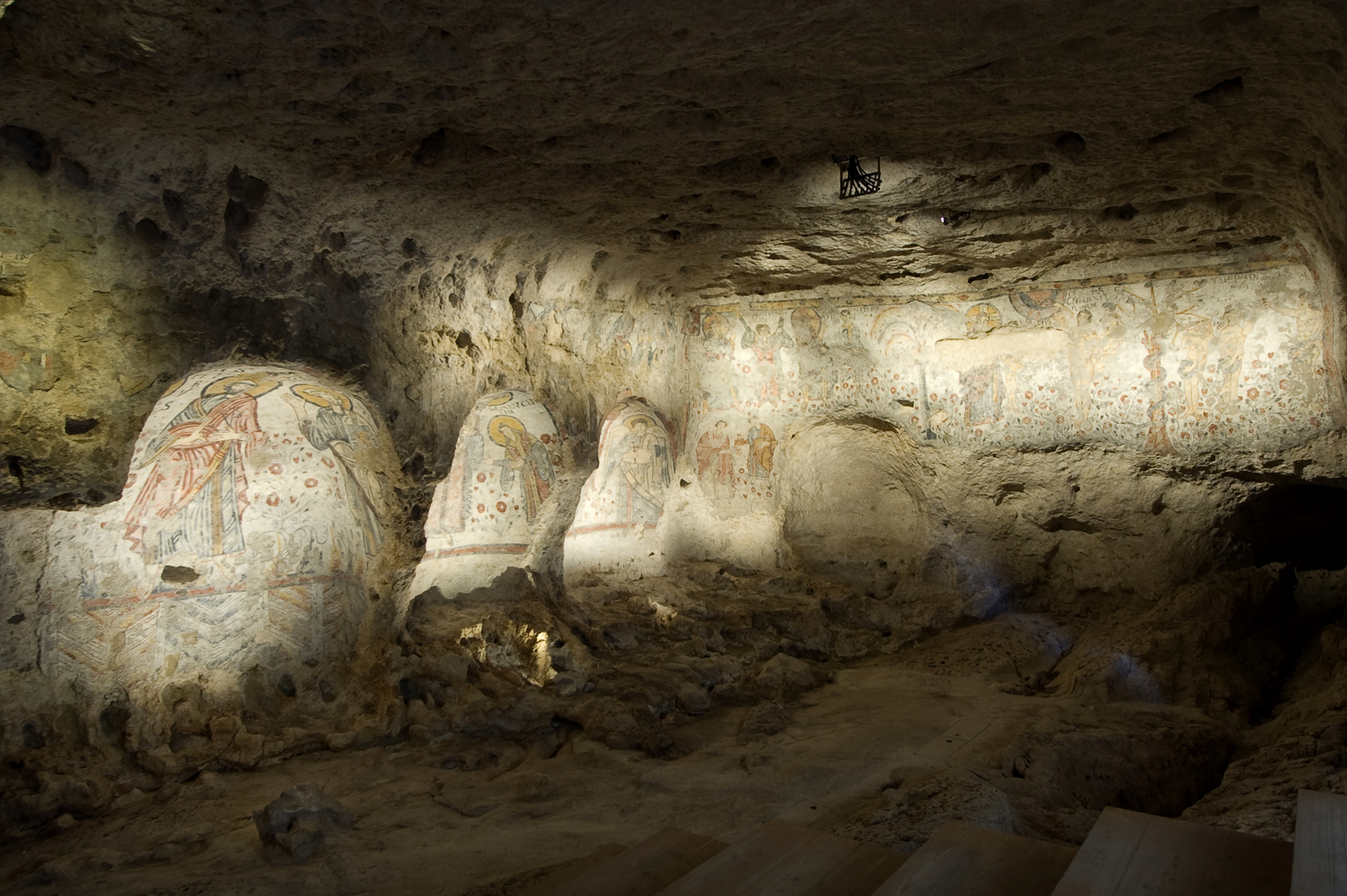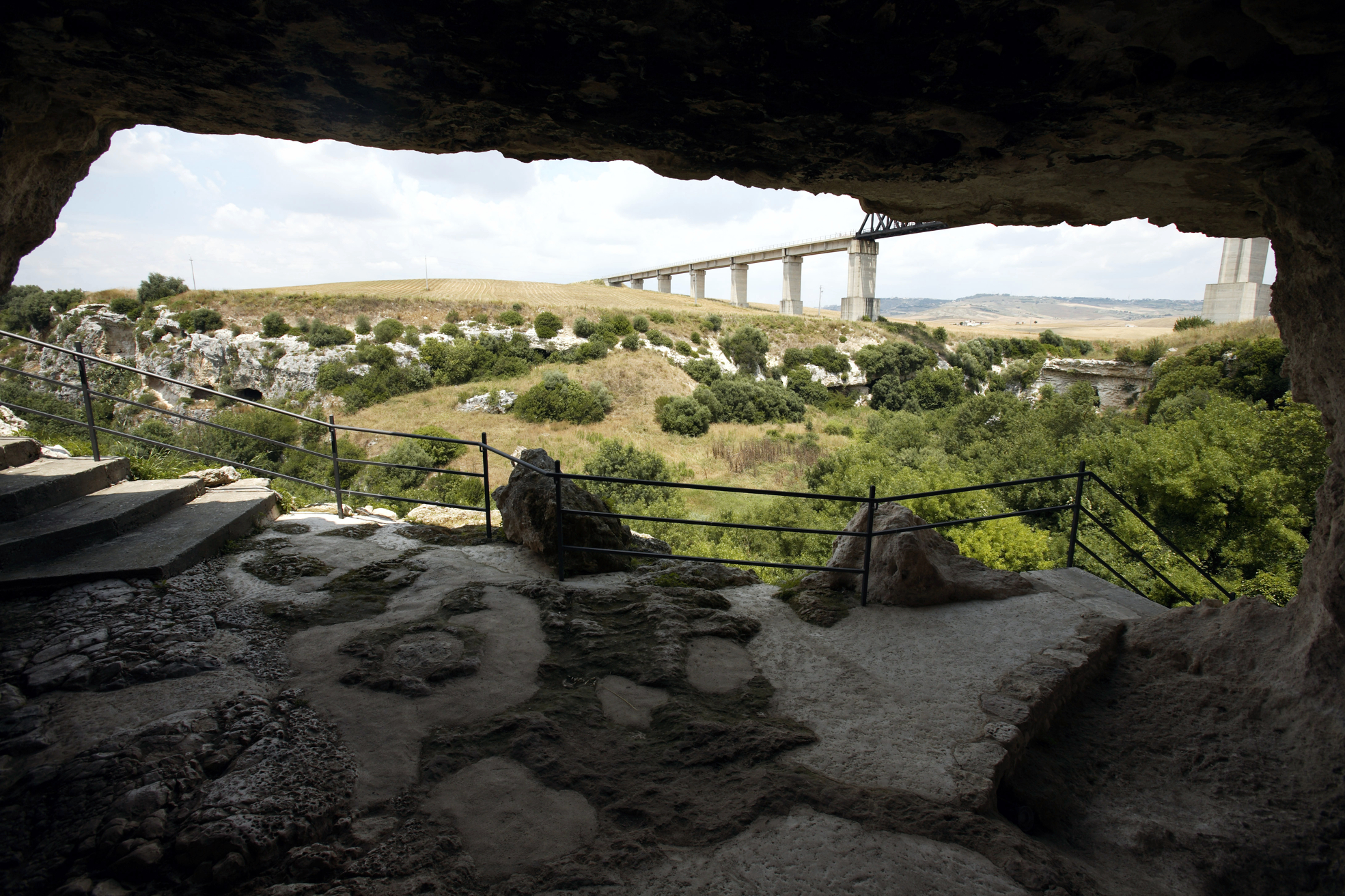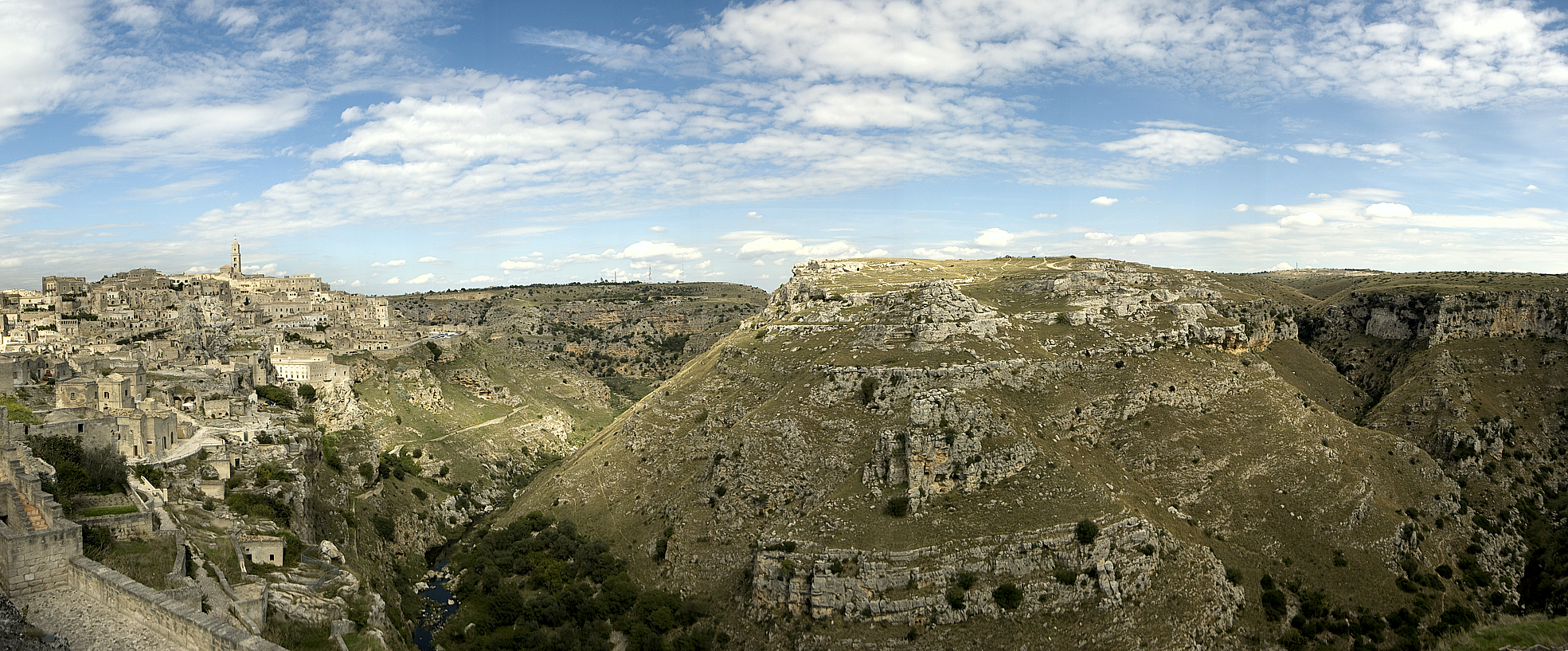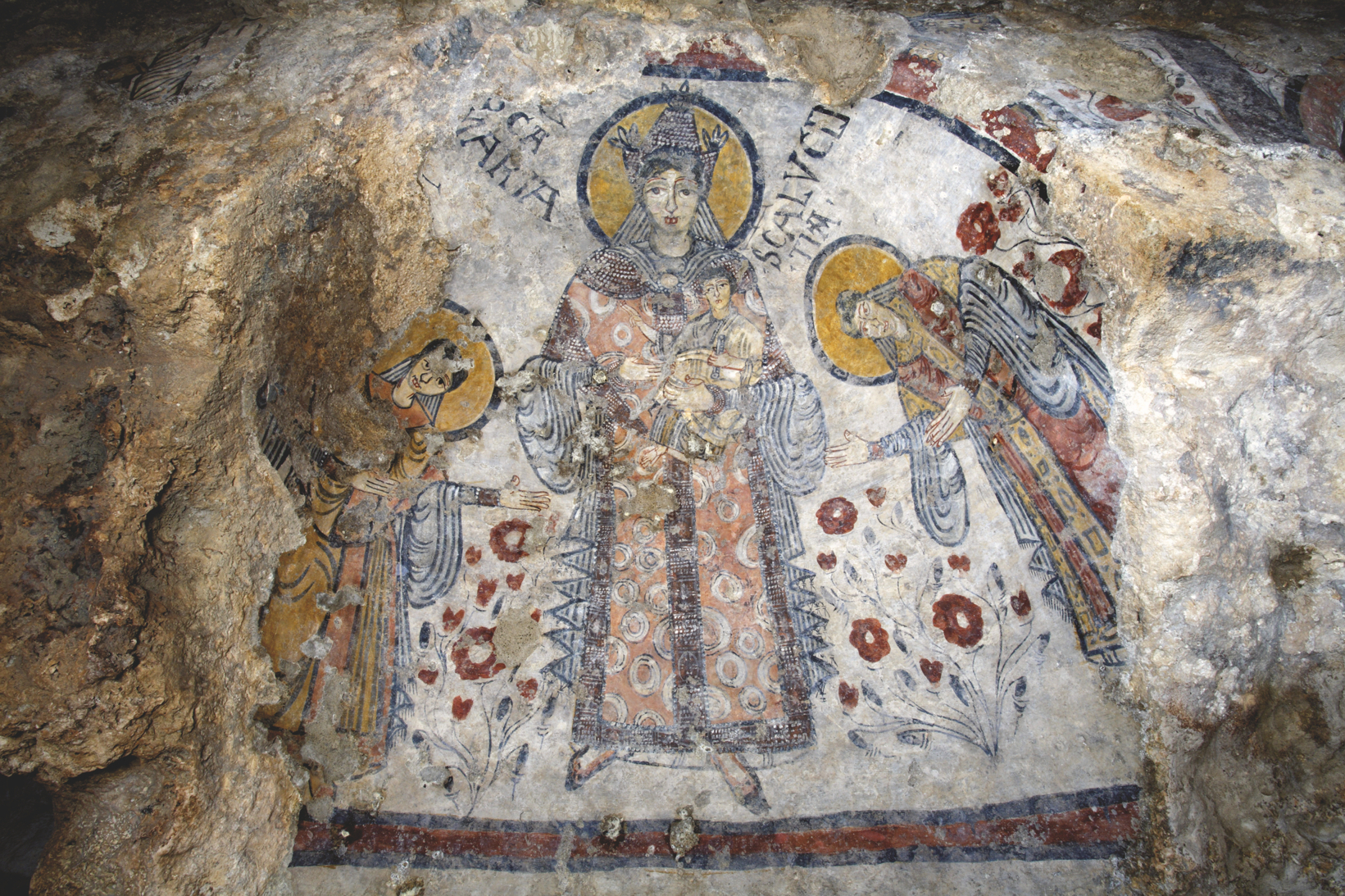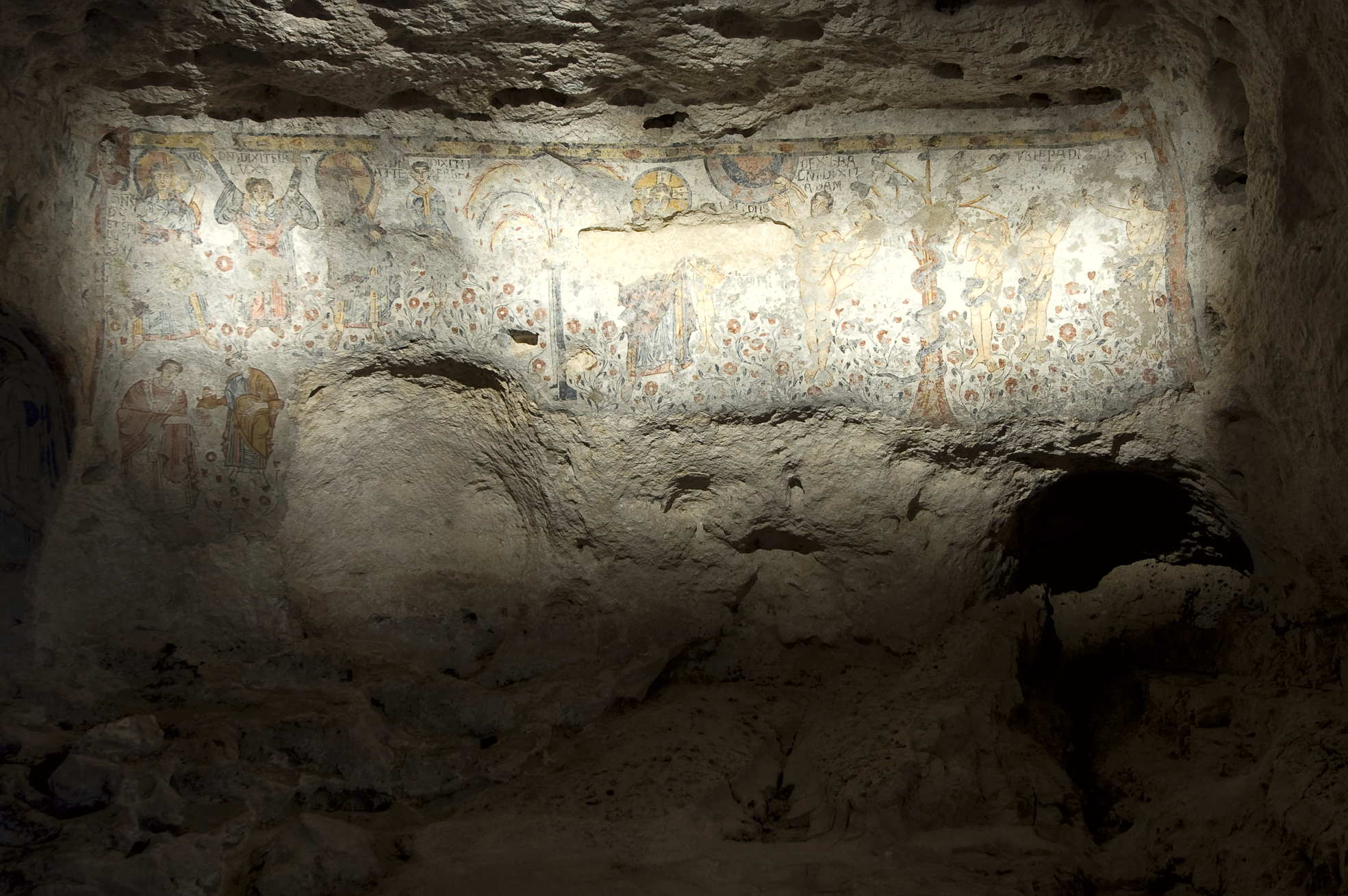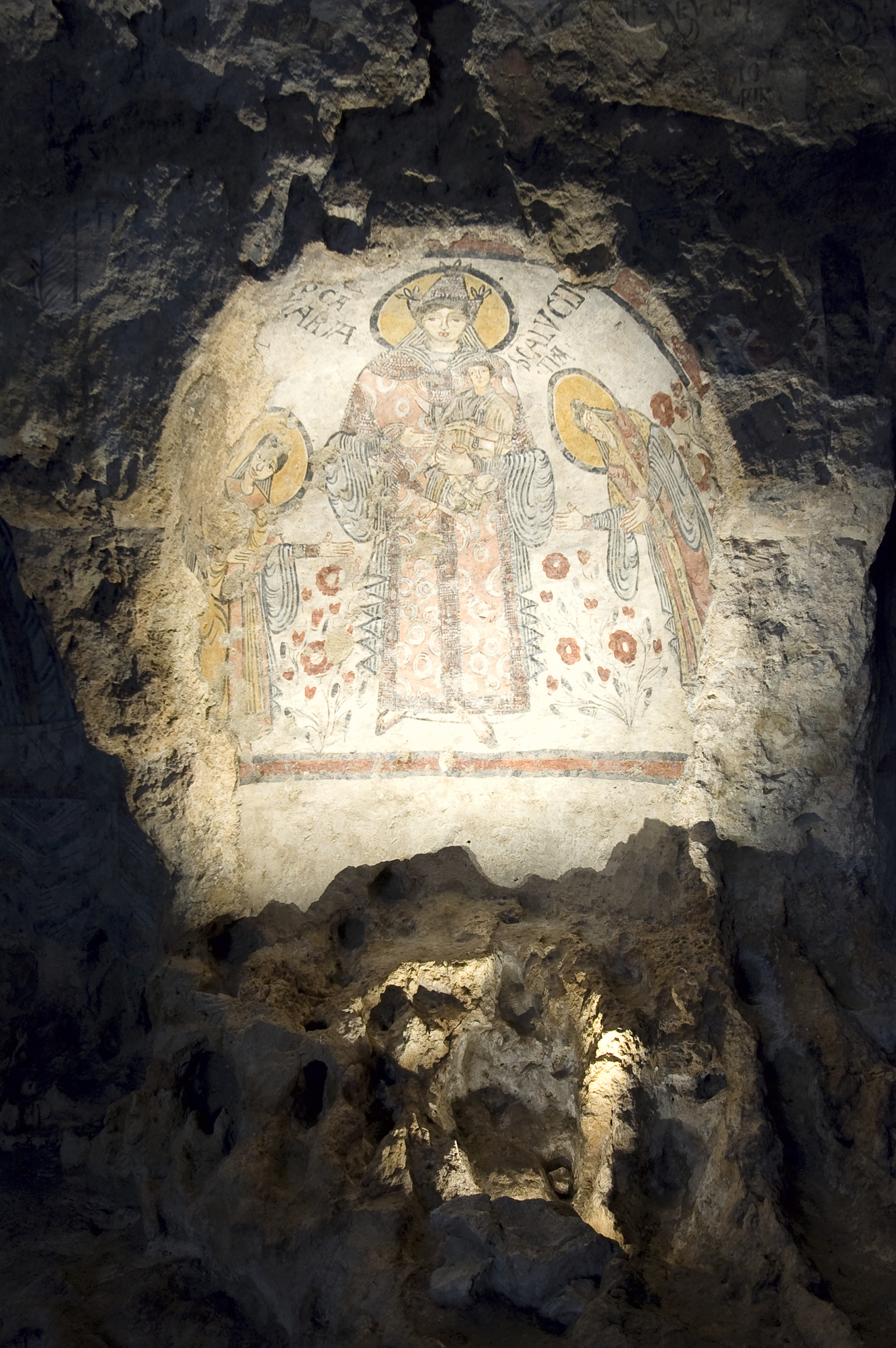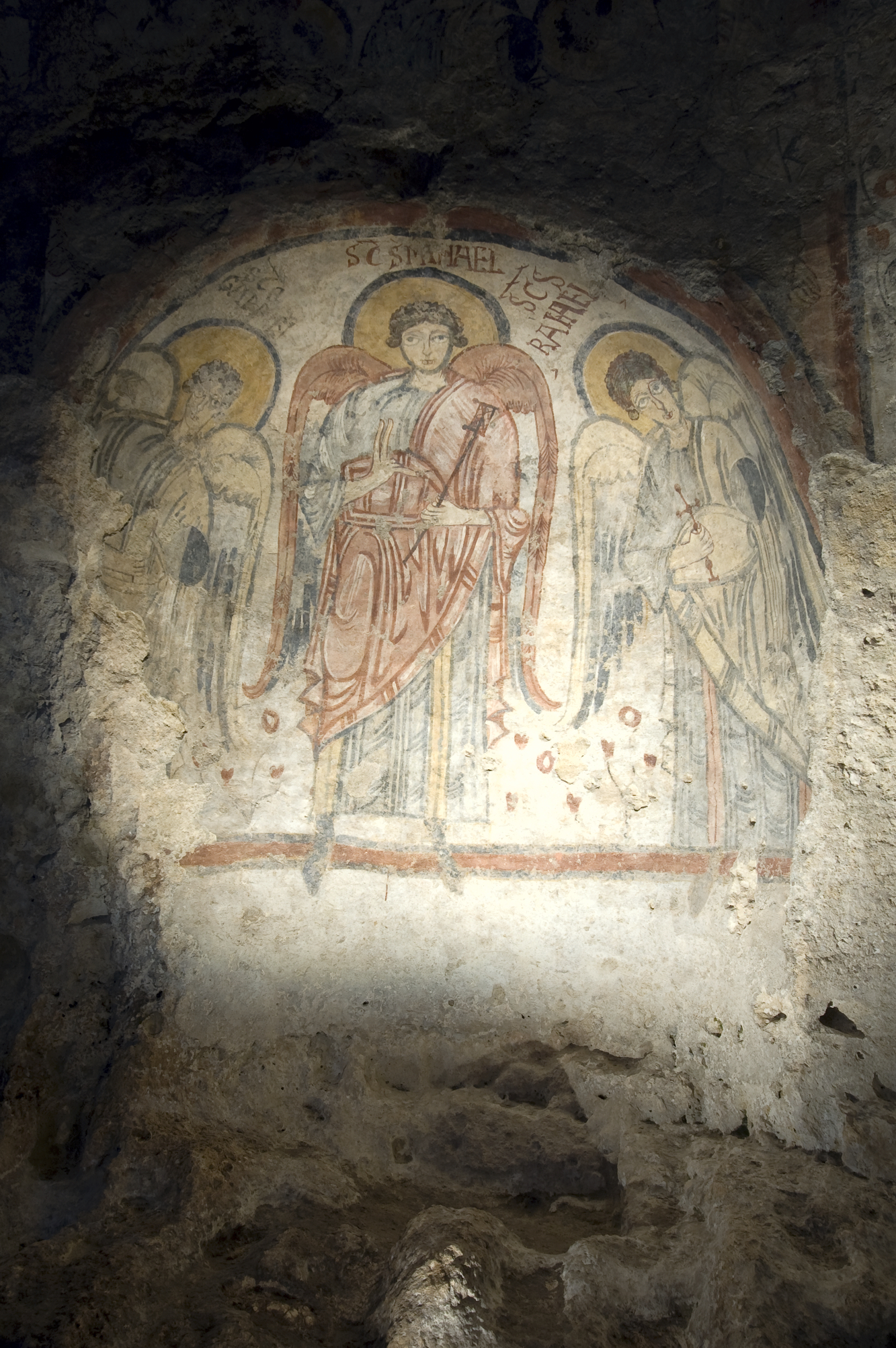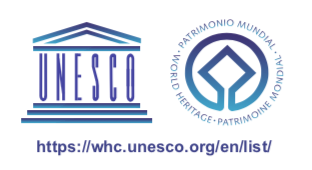Type of site:
Cave and Rupestrian Church
Place of location: Contrada Petrapenta
Village/Town: Matera
Municipality: Matera (Province of Matera )
Region: Basilicata
State: Italy
Telephone: (+39) 083 530 9071
Website: https://www.criptadelpeccatooriginale.it/index.php?lang=en
E-mail: info@materahub.it
Natural Environment:
The site is in the Natural, Archaeological Park of Rupestrian Churches of Matera – the natural environment is that of Murgia Appulo-Lucana (very typical gorge and hills landscape) limestone formed through marine sedimentation with a very important environmental heritage (flora and fauna – over 900 types of plants) typical of garrigue.
Archaeological evidences in the site:
You are in a natural cavern that opens onto a deep karstic gorge flanking the torrent Gravina di Picciano, in the Pietrapenta locality of Matera. The geological backbone of the cave comprises two sedimentary formations of marine origin: Cretaceous massive limestone and Calabrian yellow-white calcarenite. Along the surface of transgression between the two formations you can observe several holes left by stone-boring mussels. The cave represents the place of worship of a monastic community belonging to the early Middle Ages that settled in the numerous caves located on the opposite flank of the gorge. Thanks to an exemplary restoration, realized through the coordinated efforts of a team of specialists, today the “One Hundred Saints” have come back to life in their original form. This has been a long, difficult and intense commitment that should not be considered simply as a qualified restoration of a prestigious monument, as it wishes, above all things, to represent the setting up of a standard, of a “code of practice” to be employed in the long-wished-for policy for the correct preservation, programmed maintenance and modern management of the rupestrian heritage of the entire Southern Italy. This exceptional rupestrian oratory represents one of the oldest examples of the rupestrian art of Southern Italy. Its extraordinary cycle of frescoes, made five hundred years before Giotto, shows the typical features of Benedictine beneventan art and is stylistically summarized by the Lombard cultural climate (VIII and IX centuries). For the theological and artistic value of the pictorial compendium, the cave-church has been named the ‘Sistine Chapel’ of the rupestrian wall painting. The humble fresco painter, remembered as the “Painter of Flowers of Matera”, illustrated on the back wall the biblical account of the early chapters of Genesis: God the Father Creator, the Light, the Darkness, the creation of Adam, the birth of Eve, the Original Sin and temptation. Under the panel’s creation, in the three apse basins, great patriarchs are depicted: the Apostles (Peter, Andrew and John), the archangels (Michael, Gabriel and Raphael) and the veneration of the Virgin Queen by two saints. The precious cycle of frescoes, for years attacked by mosses, lichens and cyan bacteria, was recovered by the Zètema Foundation, in consultation with the Central Institute of Restoration and the participation of committed experts. The restoration was made possible thanks to fundings from Italian bank foundations and has become a model of scientific reference, a code of practice for future work on the world rupestrian heritage.

